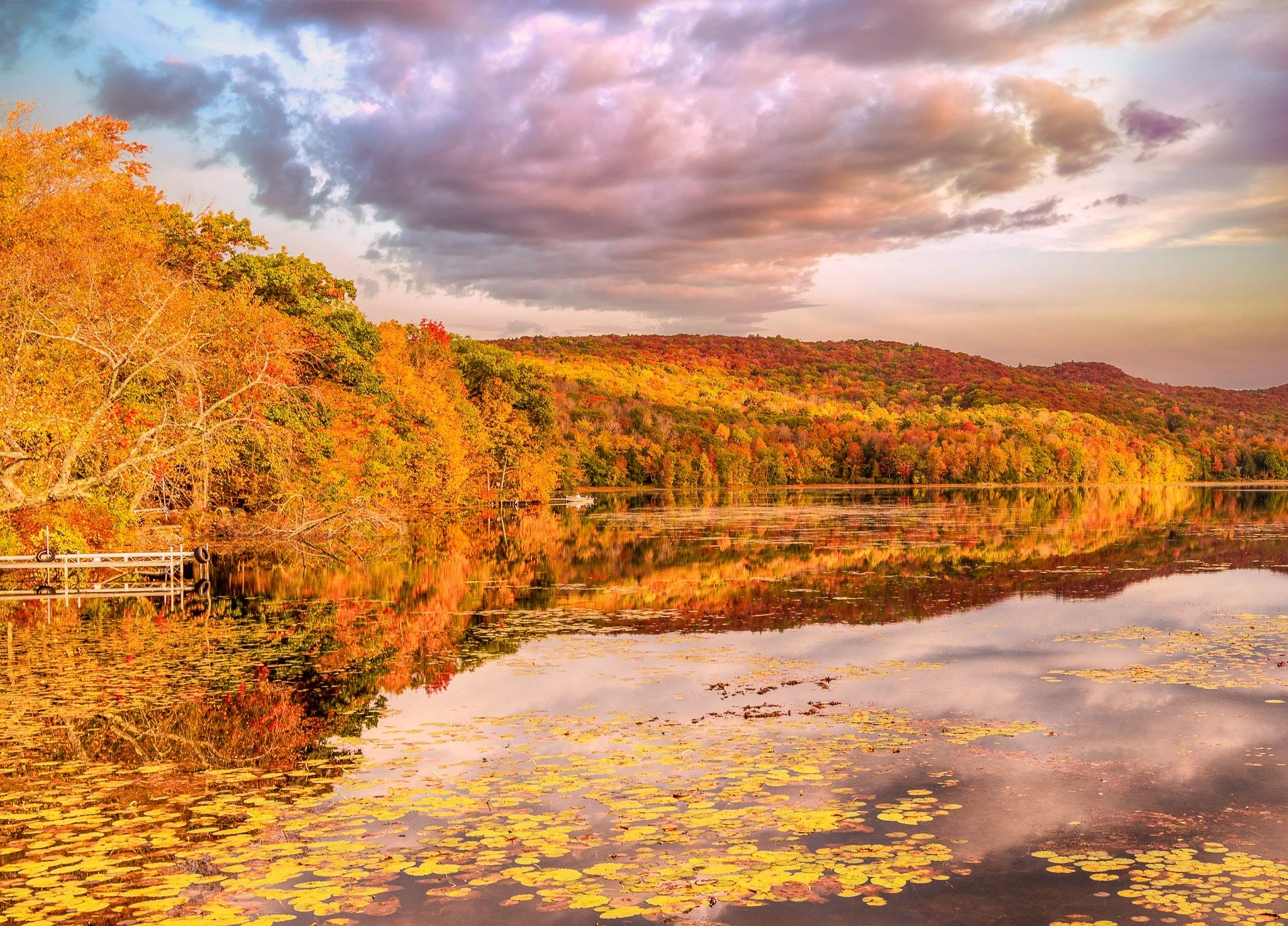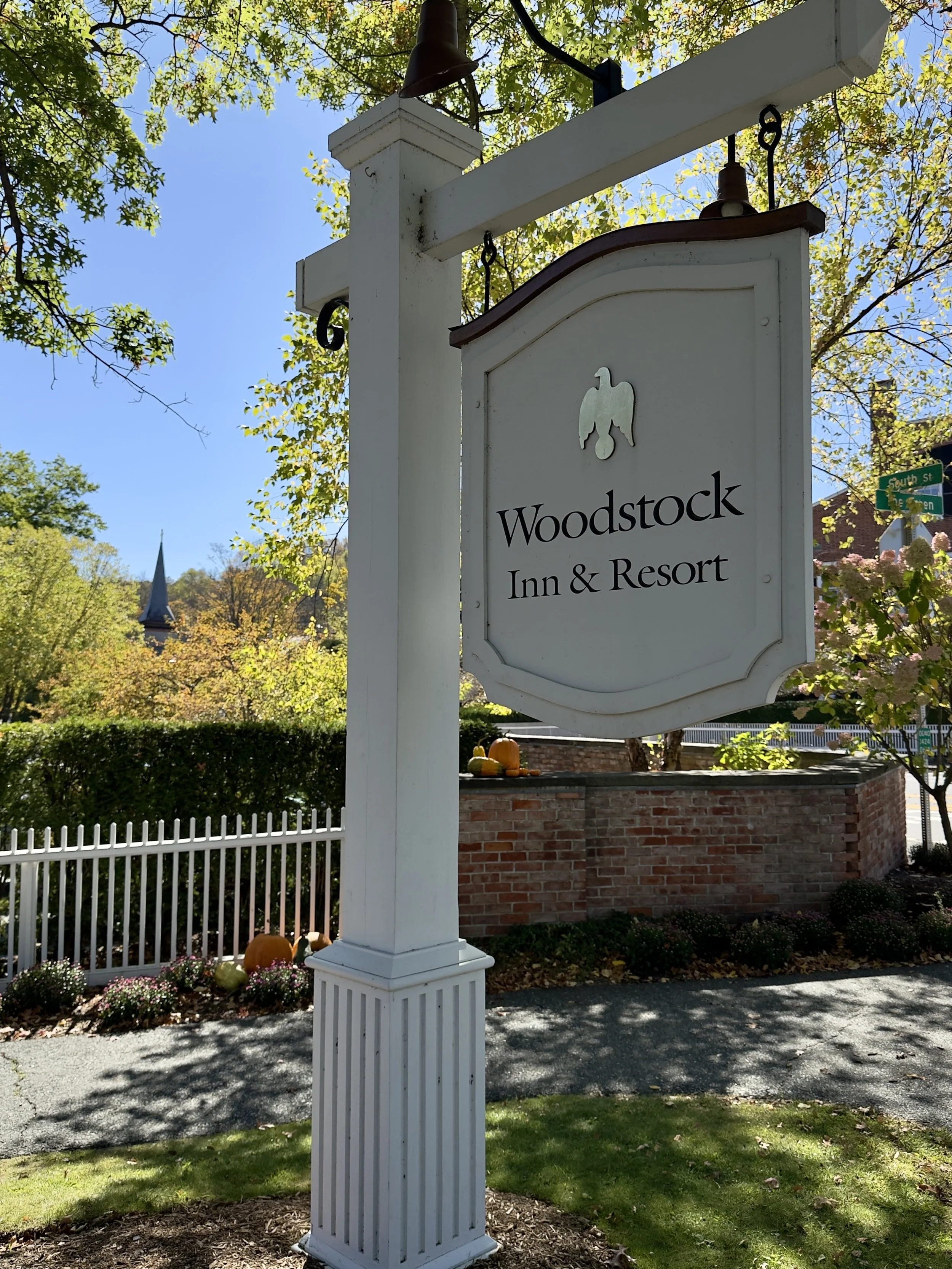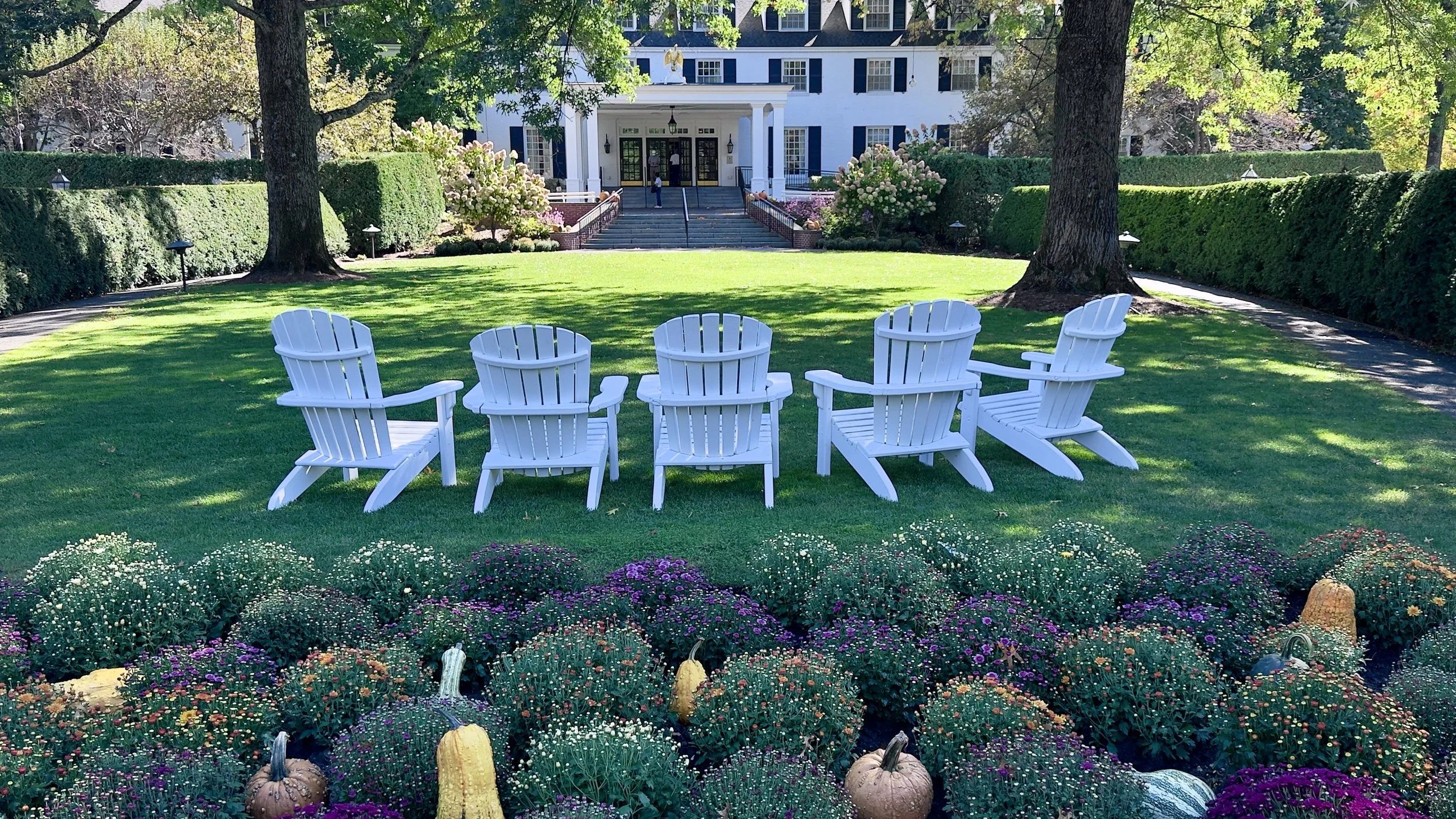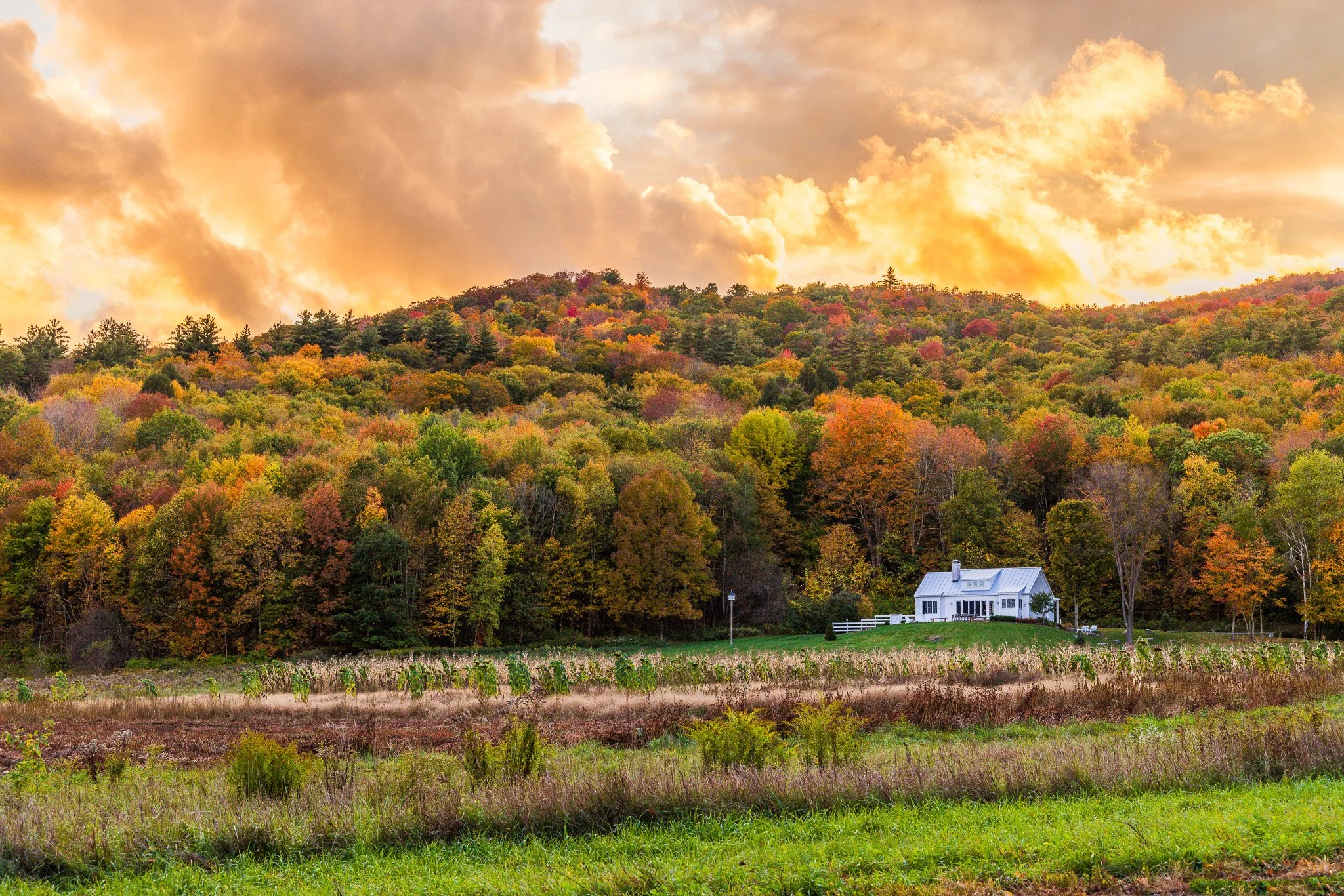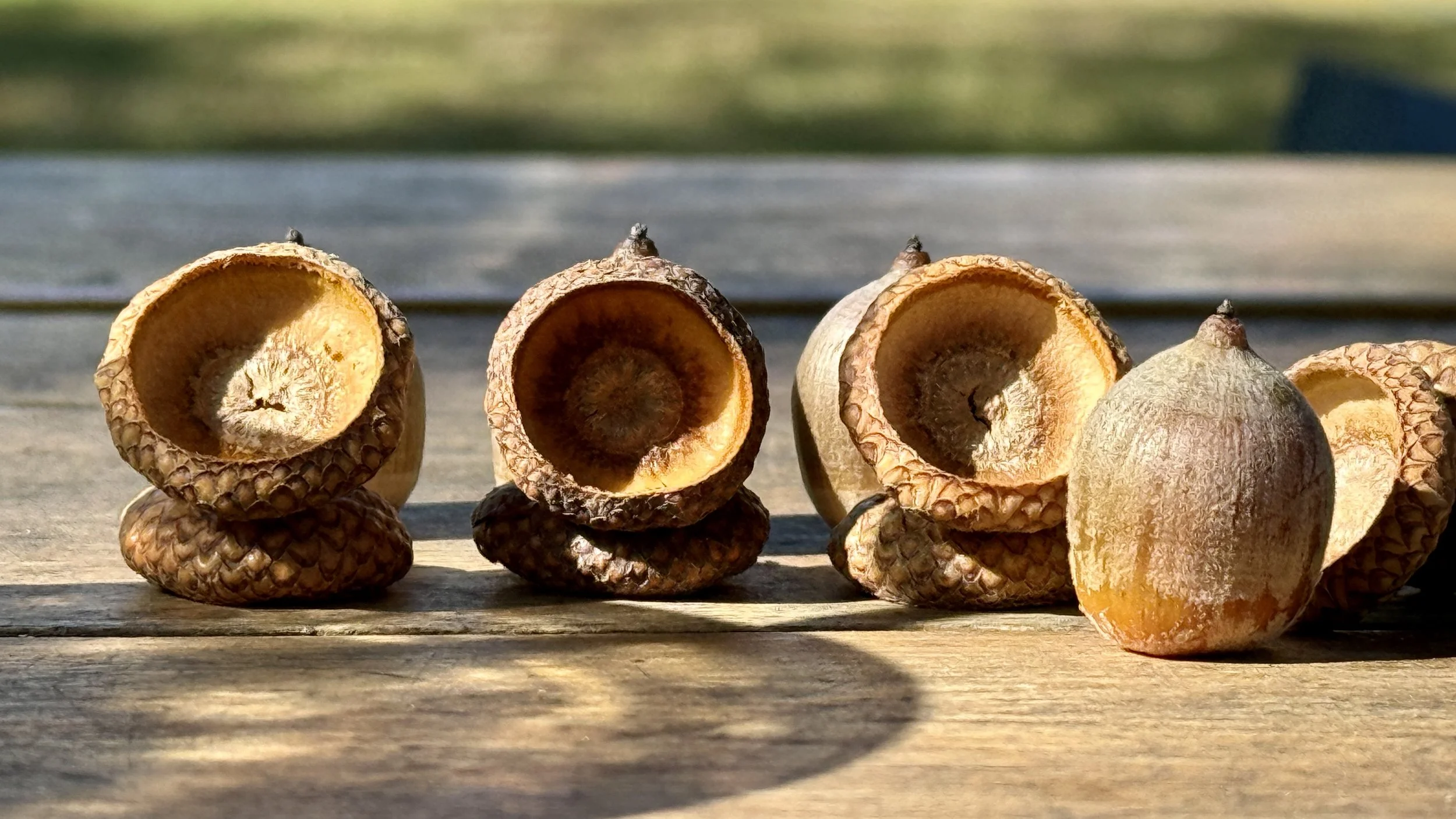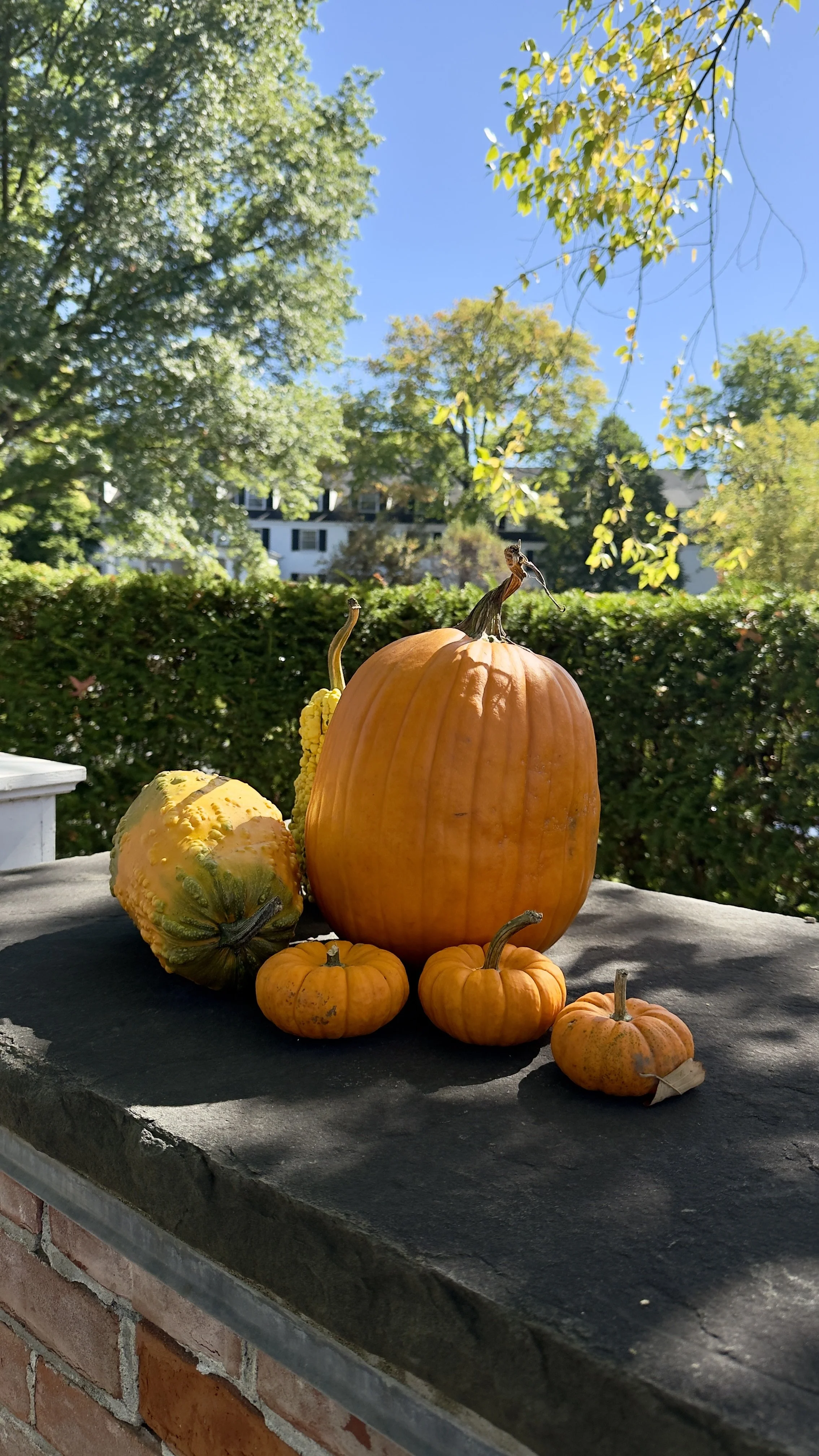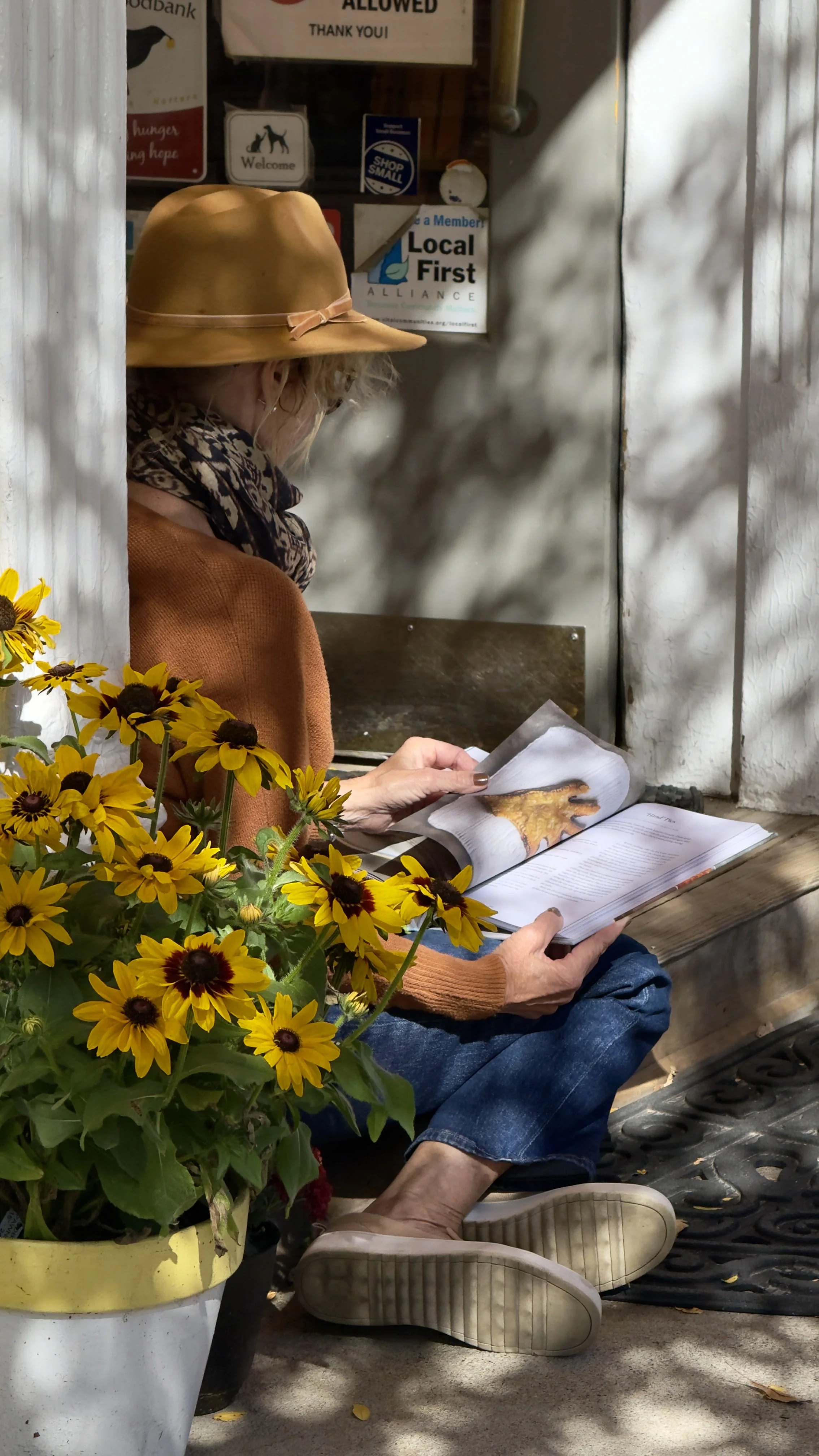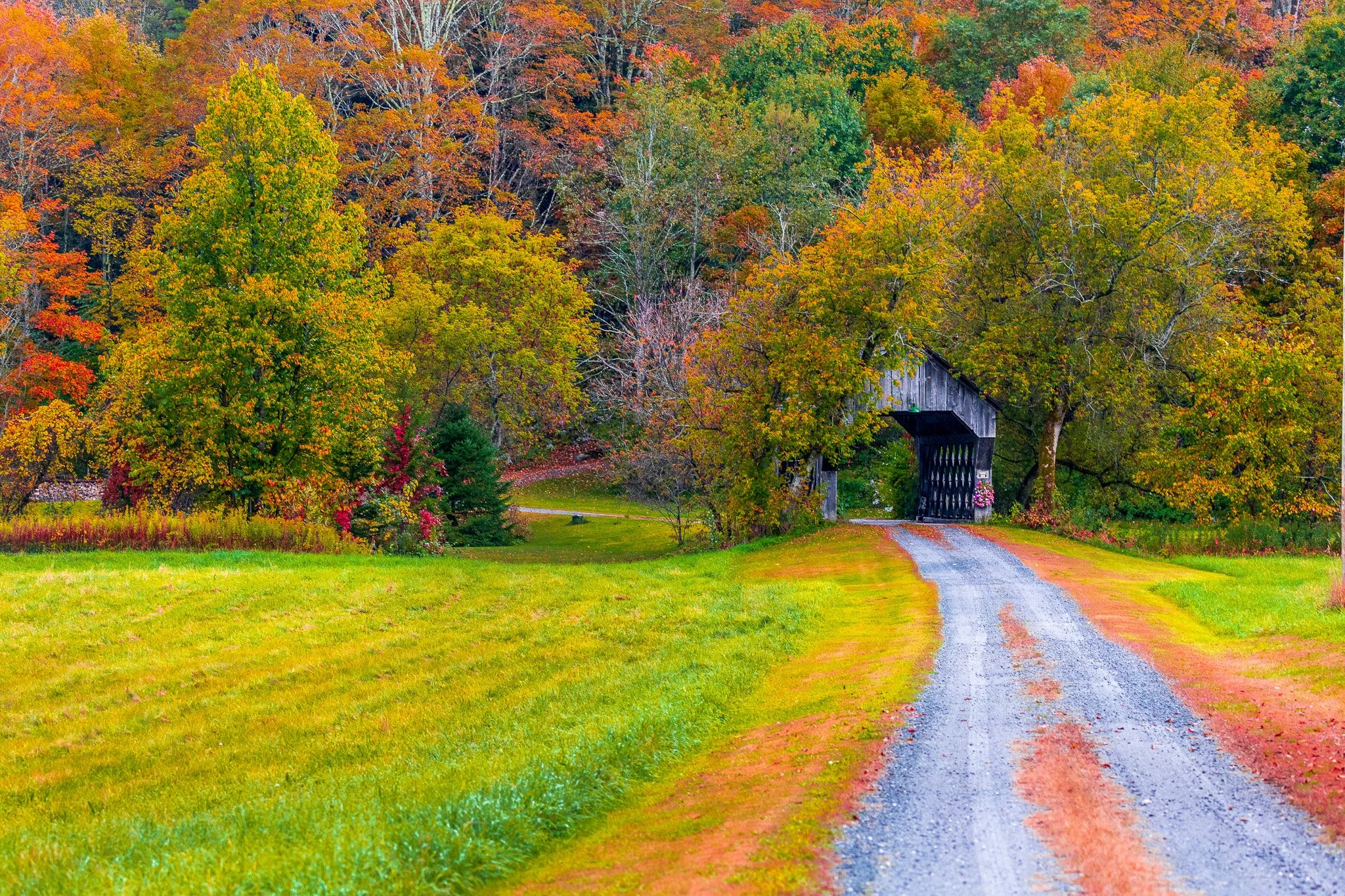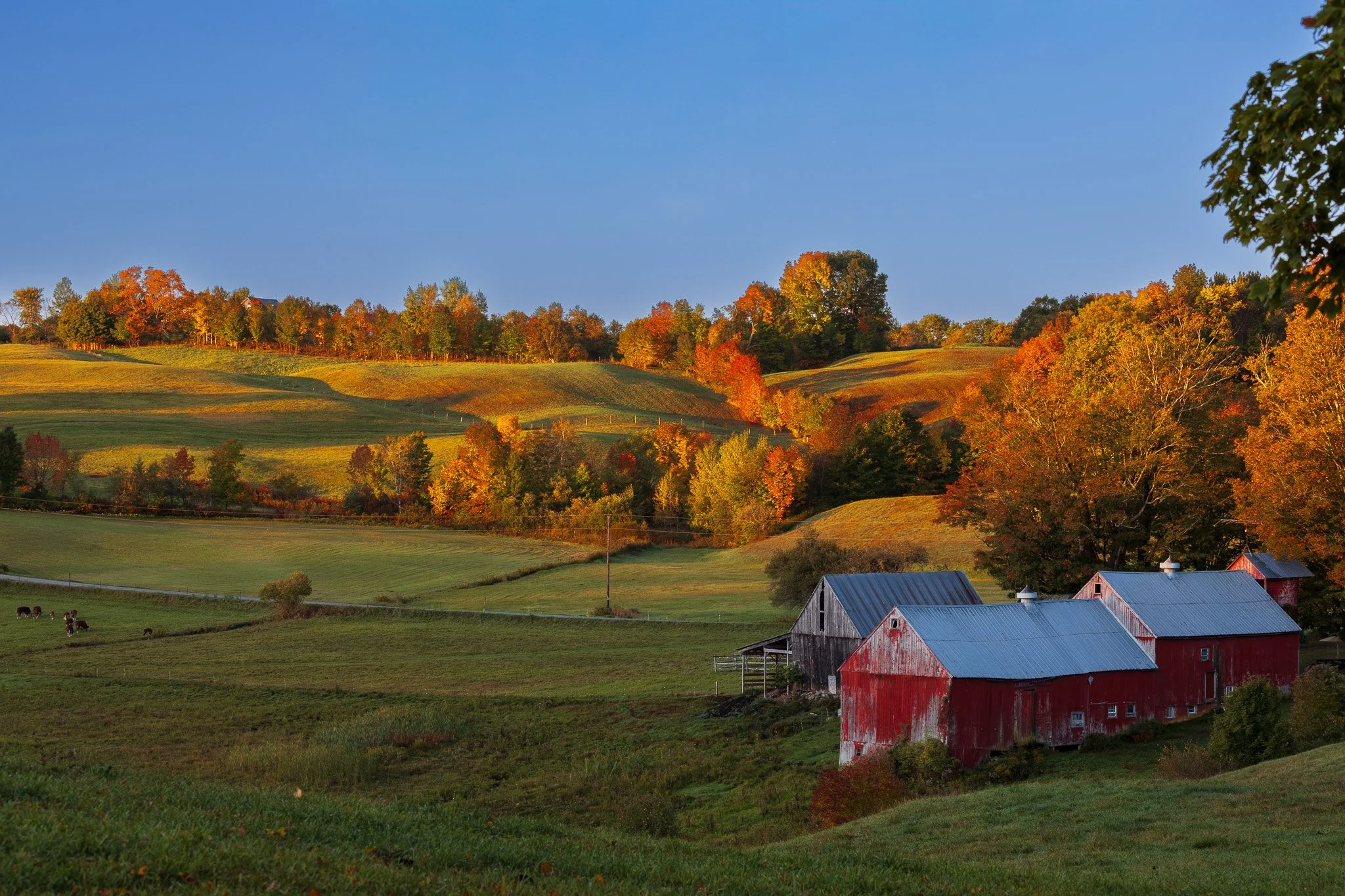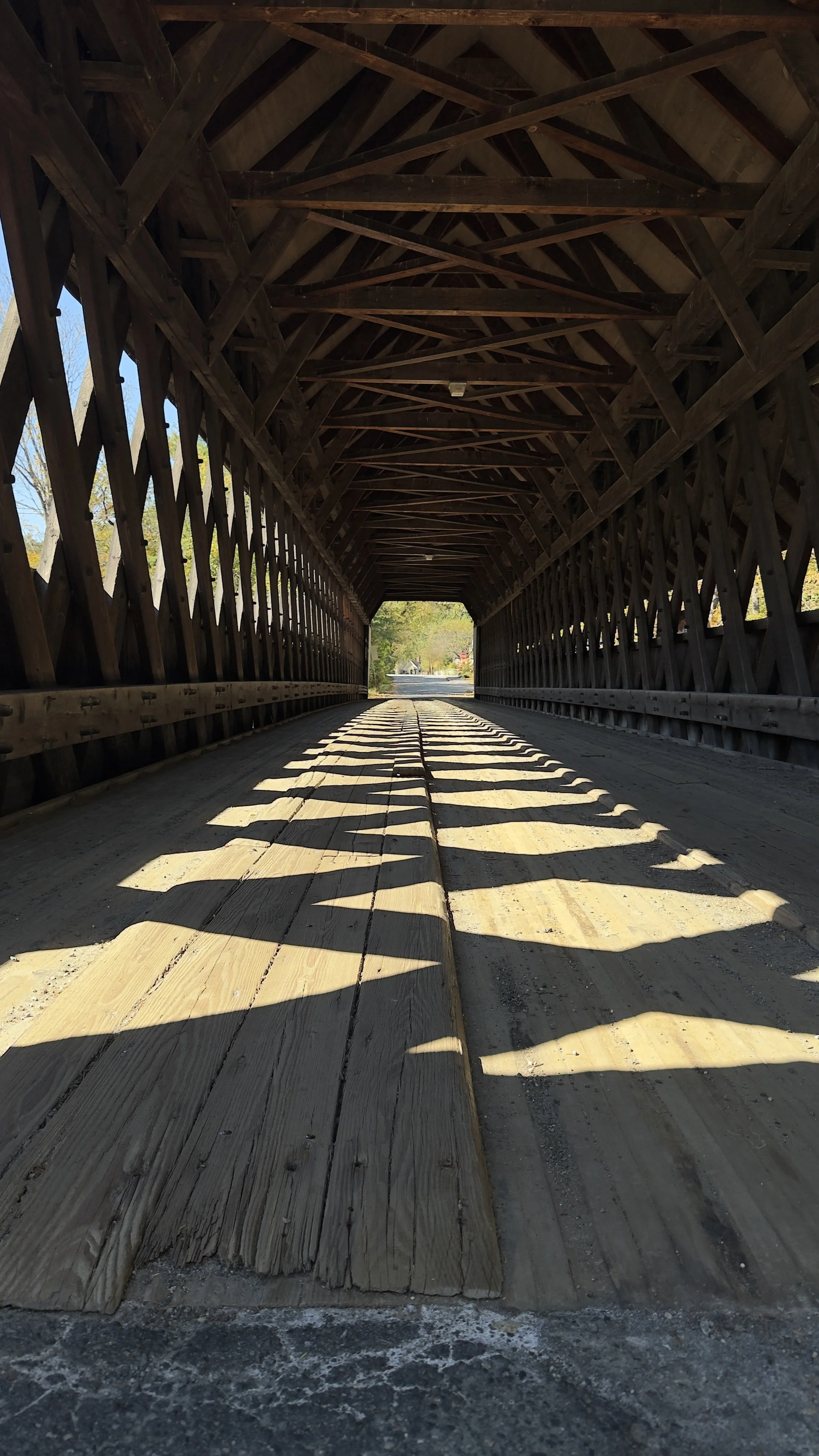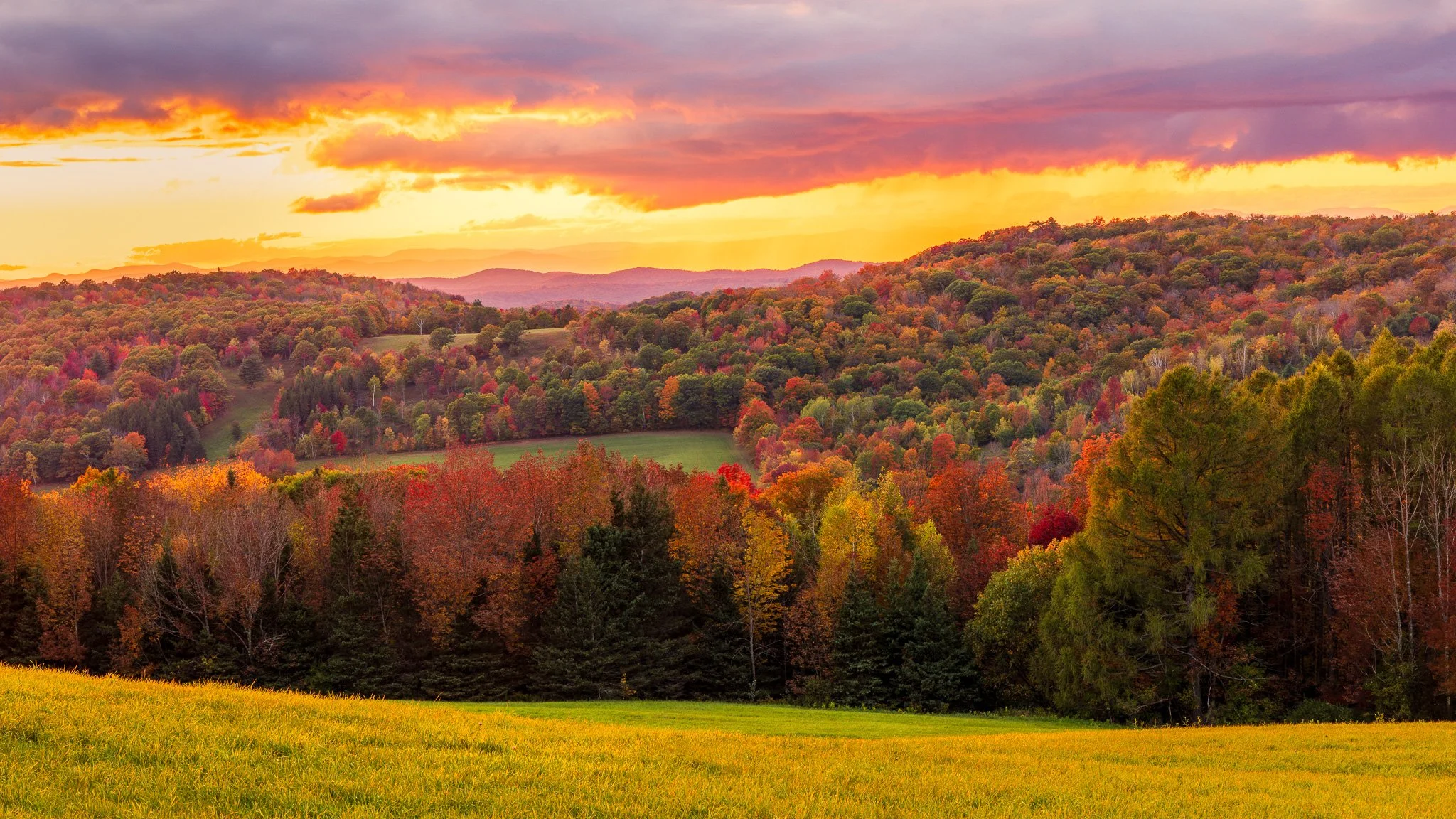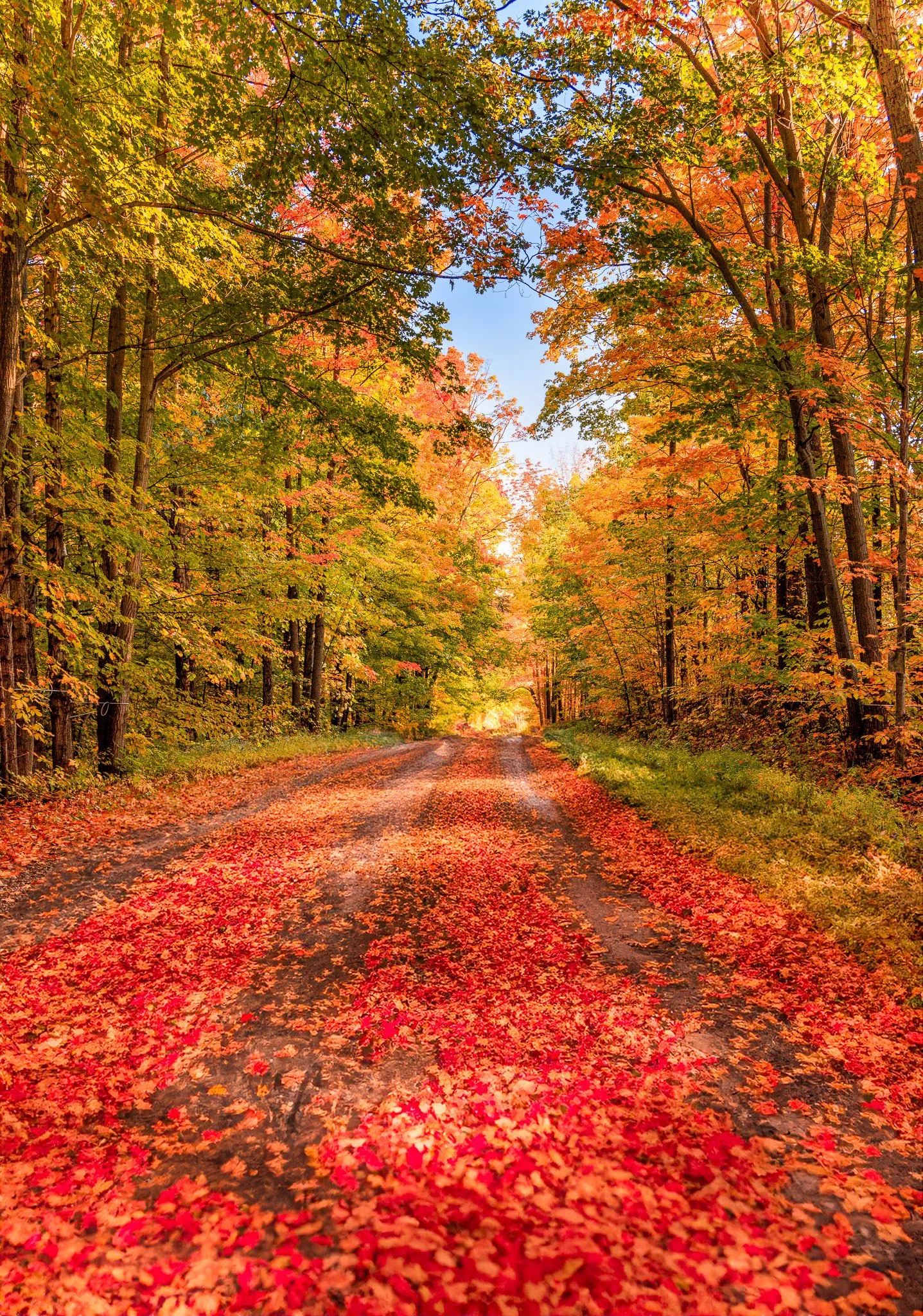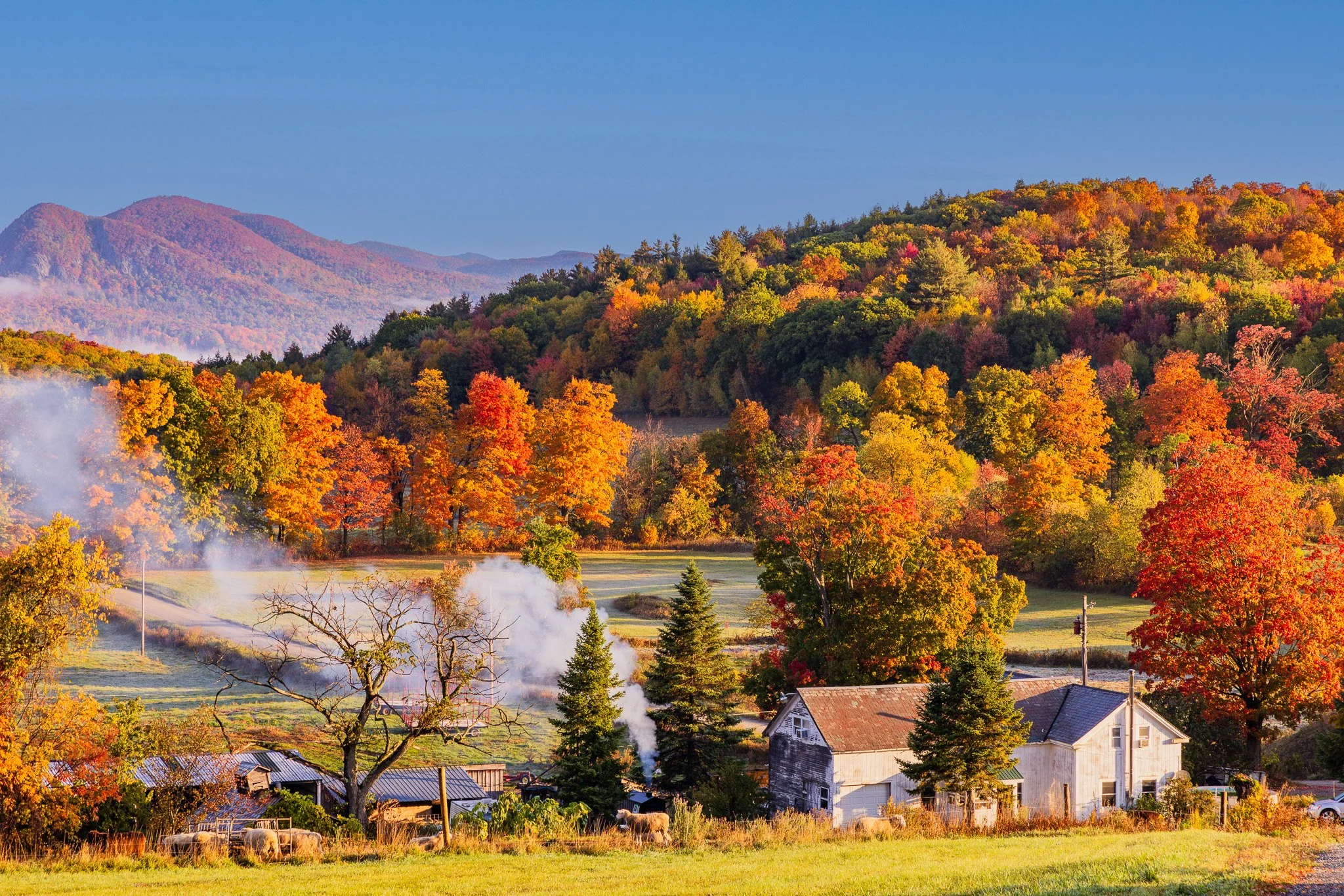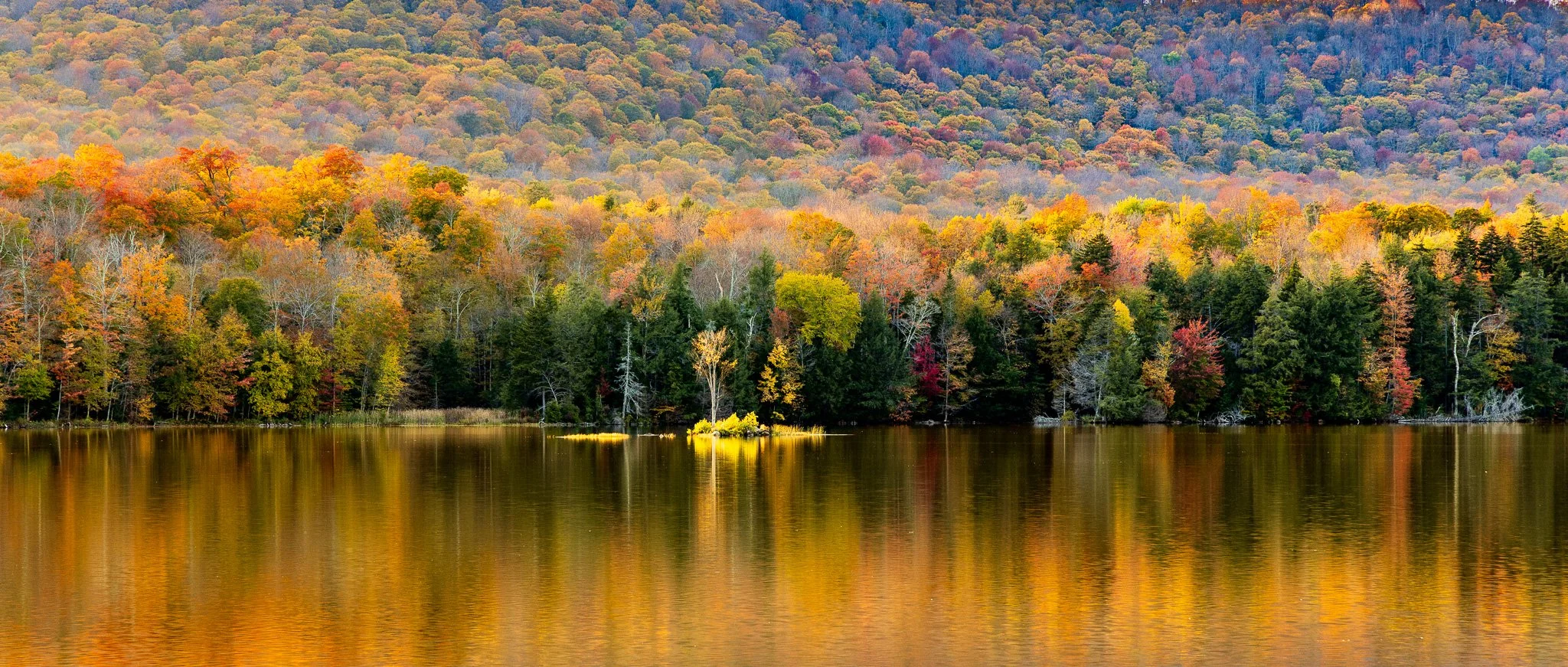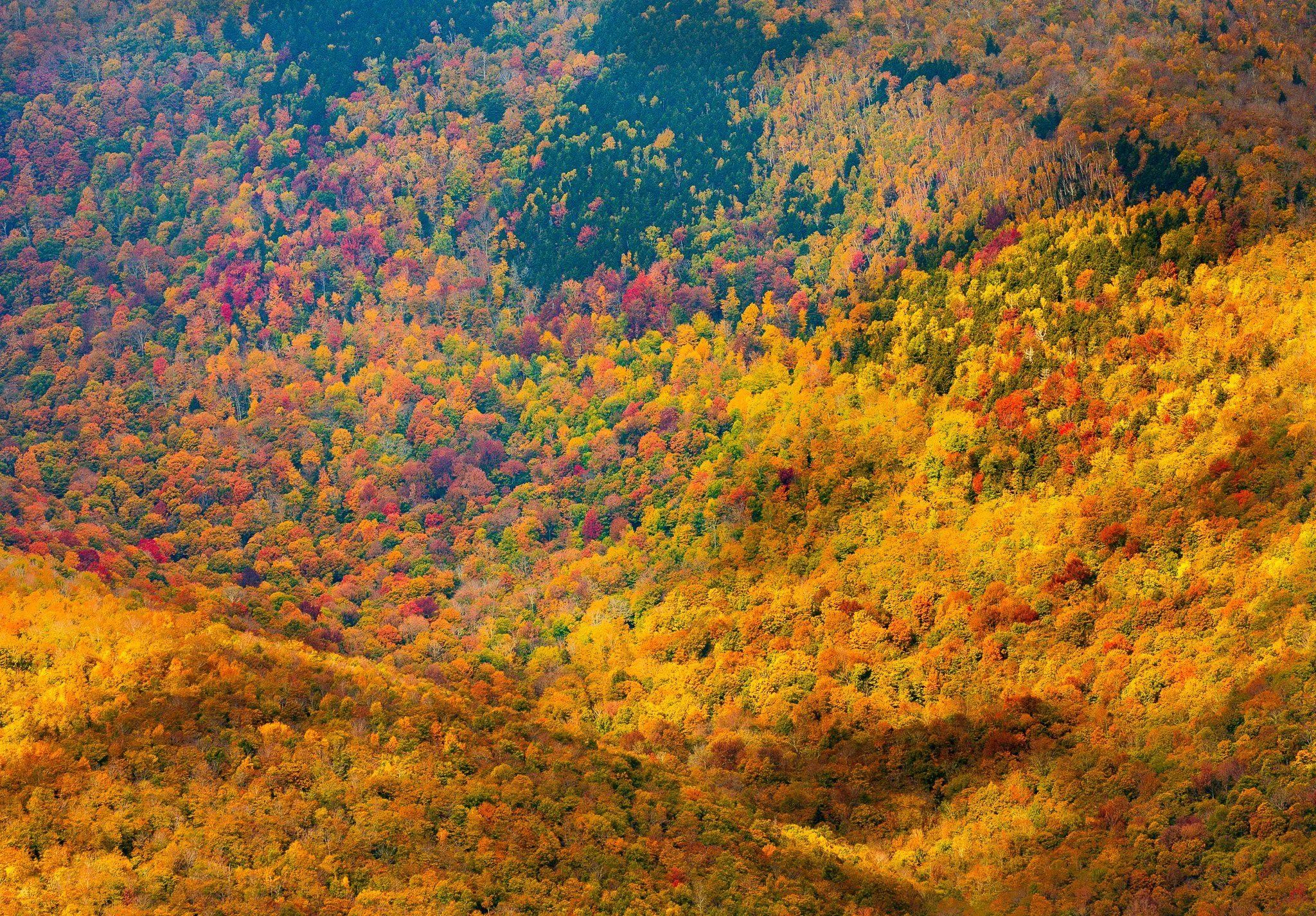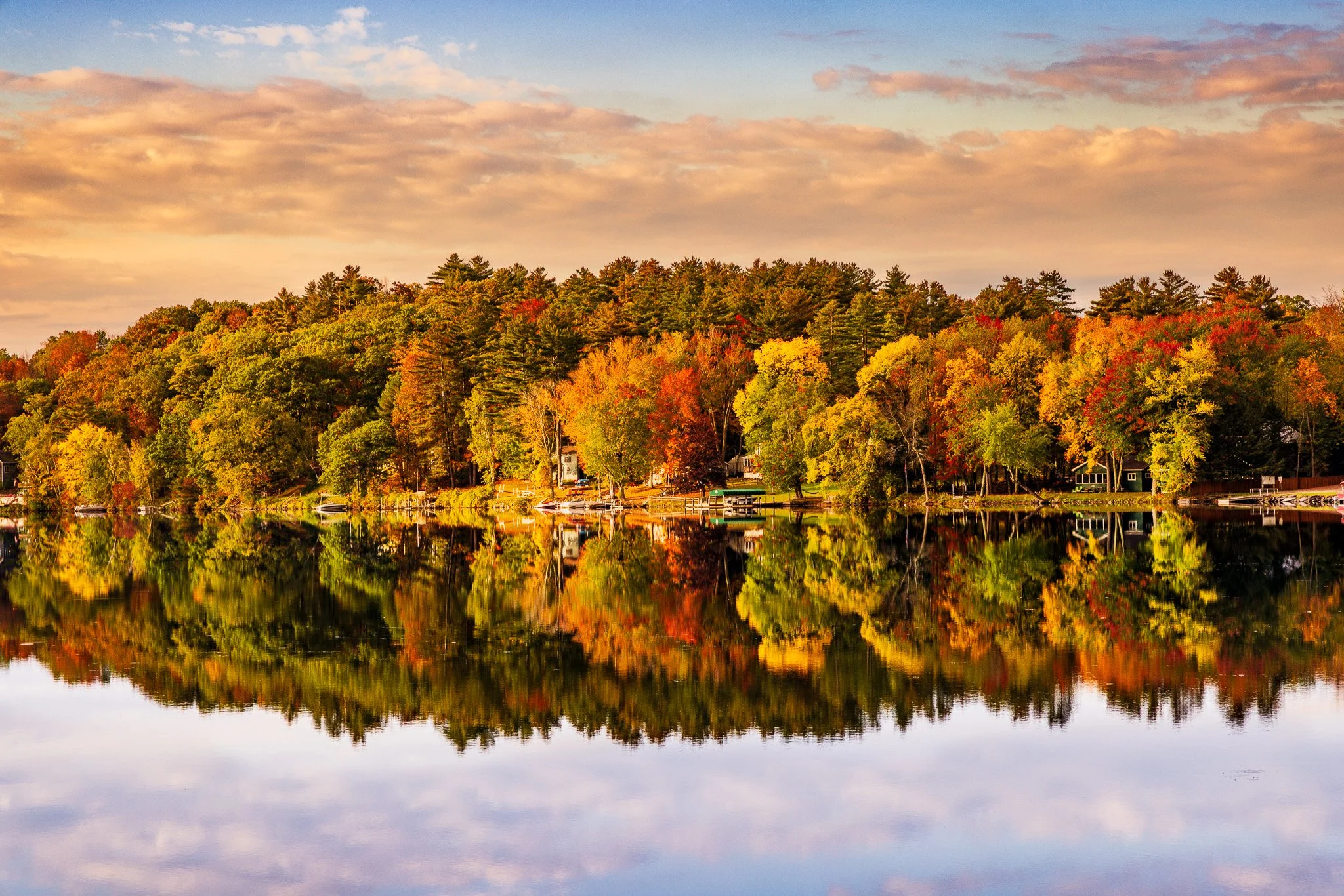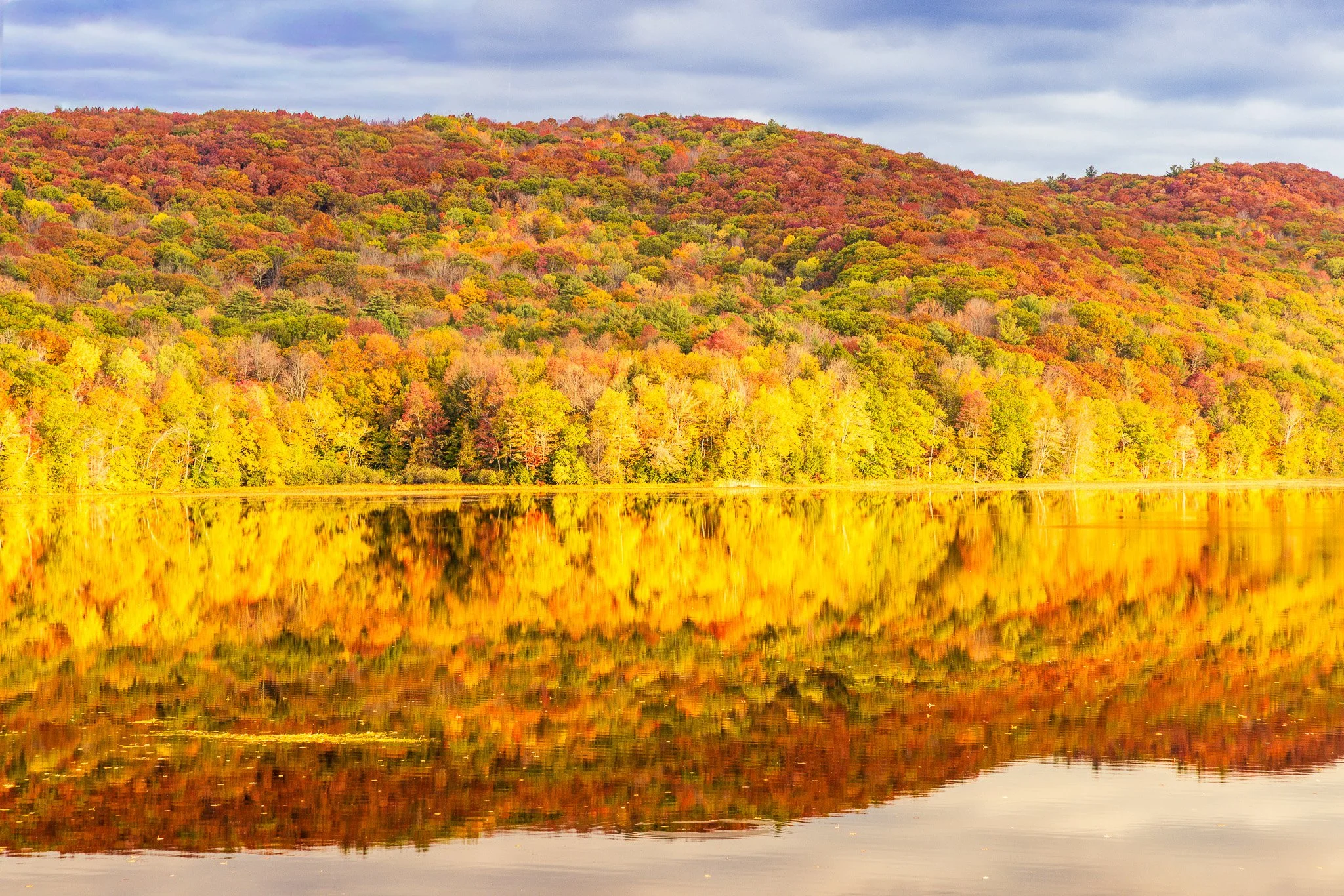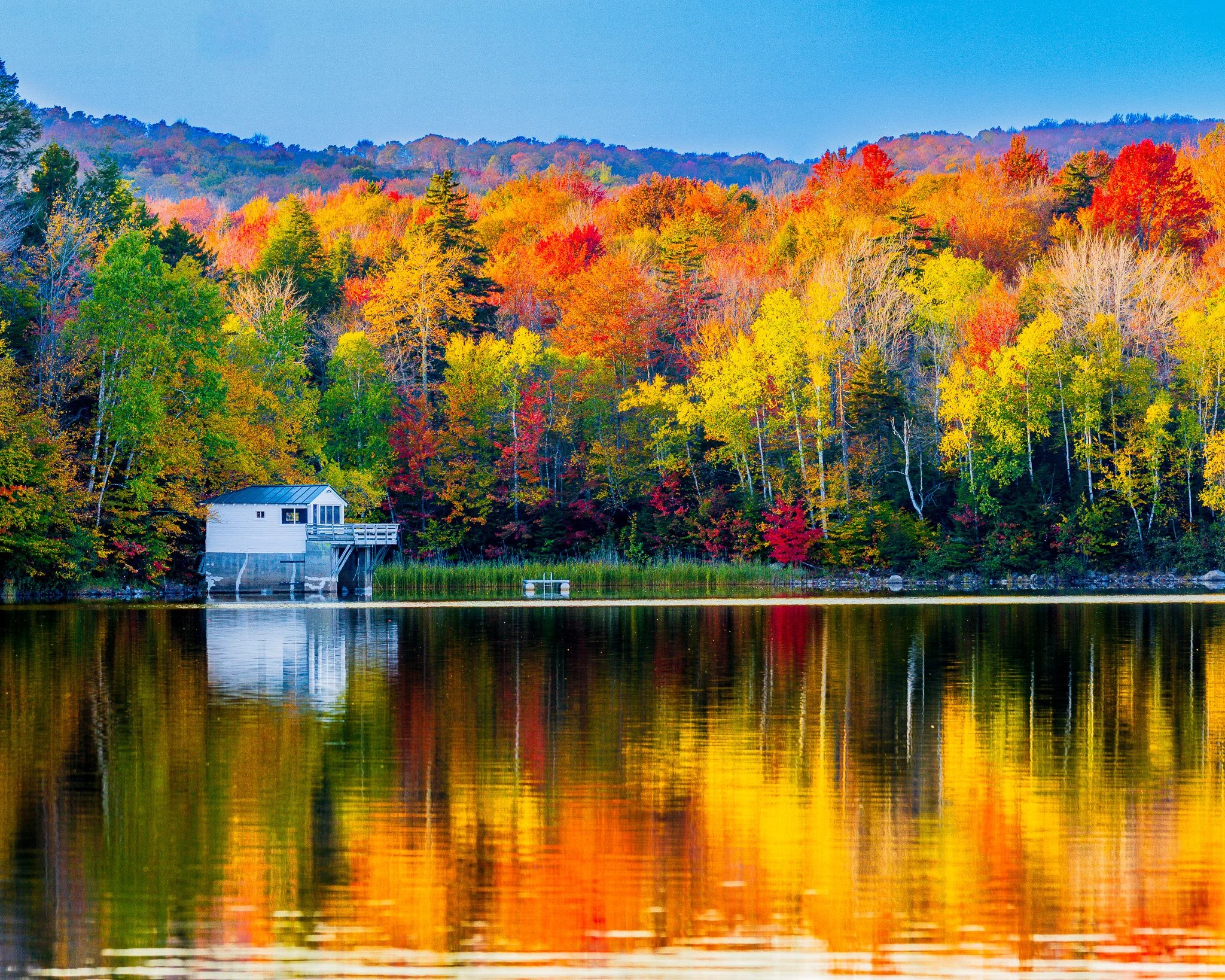My Travel & Photography Guide to Woodstock, Vermont
It feels like stepping into a painting. Only it’s real.
There’s a moment every fall morning in Woodstock when the light hits just right — mist lifts off the meadows, white fences glow gold, and the maples ignite in every shade of red and orange. It’s the kind of light that makes you reach instinctively for your camera, even before your first cup of coffee.
I’ve returned to Woodstock, Vermont, many times over the years, always drawn by its quiet perfection, the covered bridges, the rolling farms, and that particular glow that lingers on the hillsides. It’s one of the most photogenic towns in America, a living postcard where you can wander all day with a camera or your iPhone and never run out of beauty.
Lake Bomoseen at Sunrise
In this Photography & Travel Guide to Woodstock, Vermont, I’ll share my favorite photo spots — from Sleepy Hollow and Jenne Farm to Kent Lake and Lake Bomoseen — along with a relaxed 2–3 day itinerary, the best season to visit, cozy cafés, and simple photography tips for every skill level.
Where to Stay – Beauty at Every Doorstep
Woodstock’s charm lies in its scale — small enough to explore on foot, yet surrounded by landscapes that feel infinite. You can wake up to morning light spilling over a meadow and be in the village square within minutes.
The Woodstock Inn
Luxury Stays
Woodstock Inn & Resort – At the heart of the village, this inn captures Vermont elegance. Its white clapboard façade and window boxes overflow with blooms, while morning light spills across the lawn just steps from the covered bridge. Our favorite hotel in Woodstock.
Twin Farms (Barnard) – A short drive away, this Relais & Châteaux retreat feels like stepping into a painting — misty ponds, forest trails, and impeccable design.
506 On the River Inn – Overlooking the Ottauquechee River, this inn pairs country charm with river views that glow beautifully at sunset.
The Beautiful Woodstock Inn
Boutique & Mid-Range
The Shire Woodstock – Riverside views and walkable access to town make this a photographer’s dream base. The reflection of the autumn trees in the water is reason enough to stay.
Jackson House Inn – Refined yet relaxed, with gardens that come alive at golden hour — ideal for portraits or quiet morning shots.
Local Airbnbs – In nearby Pomfret, cottages open to cinematic sunrise views — mist over pastures, steeples in the distance, and barns glowing in early light. Vermont beauty often begins right outside your door.
Magic on the Roadside
Ideal Duration – A Relaxed 2–3 Day Photo Itinerary
You can photograph Woodstock in a day, but to feel its rhythm — the fog, the light, the hush before sunset — give yourself at least two to three days.
Day 1: Arrival & Golden Hour Stroll
Arrive mid-afternoon and wander through the village. Photograph the Middle Covered Bridge, the town green, and the elegant storefronts along Central Street. As daylight softens, the steeples and brick façades glow in warm tones — perfect for handheld shots on any camera.
On Our Lunch Table
Day 2: Farms, Foliage & Country Roads
Rise before dawn and head to Sleepy Hollow Farm in Pomfret. The first light spills across the hillside around 7 a.m. during peak foliage — tripod-worthy for DSLRs, stunning handheld on a phone.
Continue to Jenne Farm, where red barns sit amid rolling pastures. Then meander along Pomfret’s winding farmer roads, stopping wherever the light feels right. In the afternoon, drive to Quechee Gorge for waterfall mist and dramatic late-day color.
Just Driving By and I had to Stop
Day 3: Lakes & Reflections
Start early at Kent Pond, where the surface often lies glass-still, reflecting autumn’s palette.
Later, continue west to Lake Bomoseen, a peaceful finale to your Vermont journey. Use a polarizer or your phone’s HDR mode to capture mirrored color. Return to town for a late lunch at Mon Vert Café and one last walk through the village as leaves crunch beneath your feet.
Woodstock
Best Time to Visit
Each season in Woodstock paints a different story, but autumn is when it all comes together — color, texture, and light in perfect harmony.
Fall (late September–mid-October): The season every photographer dreams of. Cool, misty mornings and golden afternoons make every road a masterpiece. Use a polarizer for foliage and your phone’s panorama mode for sweeping views.
Winter: The village transforms into a snow globe. Soft morning light and lamplight reflections make for beautiful night photography.
Spring: Gentle greens and blossoms return, perfect for quieter compositions and macro details.
Summer: Long days, bright greens, and peaceful lakes — ideal for countryside drives and reflection shots.
I always return in October, when the air smells of apples and woodsmoke, and every bend reveals a frame waiting to be captured.
Just Magic
Getting Around – Slow Down and Savor It
Woodstock rewards a slower pace. The village center is compact and perfect for walking — each street lined with details worth photographing: window boxes, weathered signs, and brick facades. For the outlying farms and lakes, a car is essential, and those winding drives are part of the experience.
Parking is easy near the village green and along Route 4. If you’re carrying camera gear, travel light; some farm roads require short gravel walks. Vermonters are friendly but value their privacy, so shoot respectfully and avoid stepping onto private land unless invited.
Taking Time to Reflect
Dining & Coffee – Cozy Tables and Golden Light
For a small town, Woodstock’s dining scene is both charming and photogenic. Every café seems designed for lingering — and for beautiful light.
Mon Vert Café – Morning sunlight streams through big windows onto rustic tables. Grab a cappuccino, photograph your pastry, and watch the town come alive.
Soulfully Good Café – A bright, cheerful space perfect for a mid-morning break. Their croissants and sandwiches are as good as the ambiance.
Worthy Kitchen – A lively local favorite for craft beer and comfort food — the perfect end to a day outdoors.
The Prince & The Pauper – Fine dining with old-world charm. Best enjoyed after sunset photography sessions.
Melaza Bistro – Caribbean-inspired flavors meet Vermont warmth — and the plating is as photogenic as the flavors are bold.
For an espresso break, try Abracadabra Coffee Co., where each cup feels like a small work of art.
Fall Colors
Photography Gear to Bring
For my fall trips to Woodstock, I brought my Canon R5 Mark II paired with a 15–35 mm f/2.8 and a 70–200 mm f/2.8 — a perfect combination for both sweeping landscapes and intimate detail shots. Here’s what I recommend for anyone shooting with interchangeable lenses:
Wide Angle (15–35 mm): For waterfalls, covered bridges, and scenic drives through Smugglers’ Notch. It’s ideal for capturing the vastness of the foliage.
Telephoto (70–200 mm): To compress layers of color and pick out small churches or barns against the hillsides.
Tripod: Essential for long exposures at Moss Glen Falls and Bingham Falls. Bring a sturdy but lightweight carbon fiber model.
Polarizing Filter: Reduces glare on wet leaves and water, deepens sky tones, and enhances saturation.
ND Filter: Useful for smoothing waterfalls and adding creative motion blur to foliage in the wind.
Extra Batteries & Memory Cards: Cold autumn mornings drain batteries faster — and you’ll fill cards quicker than you expect during peak color.
Pro Tip: Keep a small microfiber towel in your bag. Morning fog and dew can leave mist on your lens when shooting near waterfalls or early light.
Back Roads
Smartphone Photography Tips
Use Ultra-Wide Mode for barns and landscapes to emphasize Vermont’s rolling hills.
Switch to Portrait Mode for farm details, pumpkins, and fences.
Try Night Mode for evening street scenes.
Edit on the go with Lightroom Mobile, and carry a power bank — you’ll shoot more than you expect.
Just Driving Around
Top Photography Spots – My Must-Shoot List
Sleepy Hollow Farm, Pomfret
Arguably, Vermont’s most iconic farm is a winding drive framed by sugar maples leading to a weathered barn. It can get very crowded.
Sleepy Hollow Farm looks like it was pulled straight out of a painting. Rolling hills, maple trees, a rustic barn, and a winding dirt driveway create a perfect composition. In the fall, the trees explode in gold, red, and orange, framing the farm beautifully from the roadside vantage point.
Pro Tip: Arrive at sunrise for fog and warm backlight. A 70–200mm lens captures the layered hills beautifully.
iPhone Tip: Shoot low in wide mode to follow the road's curve into the scene.
From a Drone
Jenne Farm, Reading
Red barns, green pastures, and a soft valley glow — quintessential Vermont.
Jenne Farm is a classic New England farm scene with red barns, sweeping hills, pastoral fields, and the sense of quiet you only find in rural Vermont. Photographers, magazines, and even movies have used its visuals to convey the deepest version of “Vermont.”
Pro Tip: Overcast skies make the reds richer. Use a polarizer to deepen the tones.
iPhone Tip: Tap to expose for the sky for balanced highlights.
Early Morning
Middle Covered Bridge, Woodstock
A beautiful covered bridge that is located right in the middle of Woodstock.
This bridge is one of the most photogenic spots in the state. Its rustic charm, surrounded by the Ottauquechee River and backed by classic New England scenery, makes it a perfect subject in any season. In the fall, the surrounding maples burst into reds and golds that reflect beautifully in the calm water below. In winter, fresh snow softens every edge, giving your photos a timeless, postcard feel.
Pro Tip: Shoot from both sides — one head-on for symmetry, one from the riverbank for reflections.
iPhone Tip: Portrait Mode isolates the bridge beautifully against the trees.
Get Down Low
Merck Forest & Farmland Center
This was an unexpected find. I thought this was one of the best places for Sunsets. The trick is not to drive all the way up. On the drive in, there is a large field on the right, with a forest below, and sunsets just to the left.
The 3,100-acre property is a blend of open pastures, maple groves, mountain ridges, and working farmland. That means you can photograph sunrise light breaking through misty meadows, backlit barns, or cows grazing with the Green Mountains behind them. The diversity of scenes gives you endless compositions throughout the day and across seasons.
At Sunset
Driving Down Random Farmers Roads
One of the best things you can do on a Fall Foliage trip is to drive down small farmers’ roads. This is where the magic happens, and you will get shots no one else has seen.
Those Red Leaves
Driving down the small farmers’ roads in the fall is where Vermont reveals its true character. You’ll find rolling hills framed by old stone walls, weathered barns surrounded by sugar maples, and dirt lanes glowing golden in the late afternoon light. These quiet backroads offer what most travelers miss: authentic scenes untouched by crowds or traffic.
If you want Vermont photos that feel intimate, timeless, and real, take the farmers’ roads. Slow down, follow your curiosity, and let the countryside guide your lens.
All these spots were new to me. I just drove down small roads and loved every second of it.
Quechee Gorge
The gorge, often called Vermont’s Little Grand Canyon, stretches about 165 feet deep, which makes it the deepest in the state. When autumn arrives, the walls of the gorge explode in layers of red, orange, and gold, all reflecting off the Ottauquechee River below. The color contrast between the rushing water and the fiery leaves is simply stunning, especially during peak foliage season in early to mid-October.
Pro Tip: Late morning or late afternoon light adds depth. ND filters help soften the waterfall.
iPhone Tip: Stabilize on the railing and use HDR to balance shadows.
Kent Pond
The pond sits just outside Killington, surrounded by a mix of sugar maples, birches, and evergreens that turn into a mosaic of fiery reds, oranges, and golds in October. It’s small and peaceful, which means you can often find perfect mirror-like reflections of the trees and hills on calm mornings. On foggy days, the mist rises off the water, softening the light and adding a mysterious glow that photographers dream about.
Pro Tip: Polarizer + low angle = perfect reflection symmetry.
iPhone Tip: Flip your phone upside down near the waterline for mirror shots.
Evening Light
Mount Equinox Skyline Drive
When autumn arrives, the drive becomes a winding ribbon of color. The 5.2-mile road climbs more than 3,800 feet, and at every turn, you’ll find layers of gold, red, and orange that stretch across the Taconic and Green Mountains. The higher you go, the wider the view gets, and by the time you reach the summit, you can photograph four states on a clear day—Vermont, New York, Massachusetts, and New Hampshire.
Lake Bomoseen
This is my favorite spot. A peaceful finale to your Vermont drive — boats, still water, and color-laced hills.
If you’re a photographer, Lake Bomoseen in the fall is pure gold.
The lake is surrounded by rolling hills covered in maples and birches that explode into every shade of red, orange, and yellow. When the air turns crisp, the water's calm surface becomes a perfect mirror for the foliage. Early mornings are best, when fog drifts over the lake and the light is soft and diffused. You can capture reflections so vivid they almost look painted.
As the sun rises higher, the nearby trails—like those in Bomoseen State Park—offer elevated views of the full sweep of color along the shoreline. Evenings bring warm light and incredible sunsets over the western hills, perfect for long exposures or silhouettes of the small boats docked along the edges.
Bring a polarizer to manage glare on the water, and if you shoot with a drone, the aerial perspective of the lake framed by fiery trees is breathtaking. Whether you shoot wide landscapes or quiet shoreline details, Lake Bomoseen delivers that classic Vermont fall magic in every frame.
Pro Tip: Golden-hour reflections and long focal lengths compress layers.
iPhone Tip: Use panorama mode from the dock for sweeping depth.
Pure Gold
The reflections on this lake were just insane.
Those Reflections
You will find so many unique compositions on the lake.
At Sunrise
Covered Bridges
No visit to Woodstock, Vermont, feels complete without seeing its charming covered bridges. Start in the village at the Middle Covered Bridge, a red-roofed beauty that crosses the Ottauquechee River right in town. Built in 1969 to replace the original 19th-century bridge, it’s one of the few public covered bridges constructed by the state and includes a pedestrian walkway perfect for slow strolls and photos. Just a few minutes east, the Taftsville Covered Bridge dates back to 1836, making it one of Vermont’s oldest. Its deep-crimson color, twin spans, and riverside setting make it a favorite for photographers, especially during fall foliage. West of town, the Lincoln Covered Bridge sits quietly along the river in West Woodstock. Built in 1877, it’s one of the only covered bridges in the state using a rare Pratt truss design. Each bridge has its own rhythm and story, offering a glimpse of Vermont’s past and countless opportunities for reflection shots, symmetry, and soft morning light.
Chittendon Reservoir and Lefferts Pond
Tucked between forested ridges, Chittenden Reservoir reflects the surrounding mountains like a mirror in early morning calm. The glassy water doubles the color, giving you those perfect symmetry shots that look like paintings. Go just after sunrise when the light warms the mist drifting across the lake, or stay for the golden hour when the low sun makes the reds and oranges glow. Bring a polarizing filter to cut glare and deepen the sky’s reflection. If you have a drone, this area offers wide, cinematic aerial compositions of the shoreline curves and islands.
Lefferts Pond
Only a few minutes away, Lefferts Pond feels more intimate. It’s smaller and quieter, framed by dense woods that explode with color in October. Early morning fog often lingers here longer than at the reservoir, giving your images a soft, dreamy quality. The still water and fallen leaves along the shoreline make beautiful foreground elements for reflections. If you’re shooting wildlife, you might spot herons or loons gliding through the mist.
Reflections
Emerald Lake State Park
The lake lives up to its name in every season, but in autumn, the mix of emerald water and fiery red, orange, and gold foliage creates an incredible contrast. On calm mornings, the still surface of the lake becomes a perfect mirror, reflecting the mountains and trees like a painting. Bring a polarizing filter to control glare and deepen the colors.
Festivals & Events – Vermont’s Seasonal Spirit
Woodstock celebrates its seasons with heart — and every festival is a feast for photographers.
Woodstock Apples & Crafts Fair (October): Handmade art, local produce, and plenty of color and texture for candid photography.
Wassail Weekend (December): Horse-drawn carriages, wreaths, and lights turn the village into a winter postcard.
Covered Bridges Half Marathon (June): A lively local tradition and a chance to capture motion, smiles, and community spirit.
Final Thoughts – A Place to Pause and See
Each time I return to Woodstock, I’m reminded why this small Vermont town leaves such a lasting mark. It’s not just the beauty — though it’s breathtaking — but the calm that seeps into you as you wander. The pace slows, the light softens, and suddenly you’re noticing the small, quiet details that make life beautiful again.
If this Photography & Travel Guide to Woodstock, Vermont helped you plan your own photo trip I’d love it if you shared it or tagged me in your photos. Follow me on Instagram or Facebook for more travel inspiration, or subscribe to my newsletter below to hear about upcoming photography workshops in New England.
